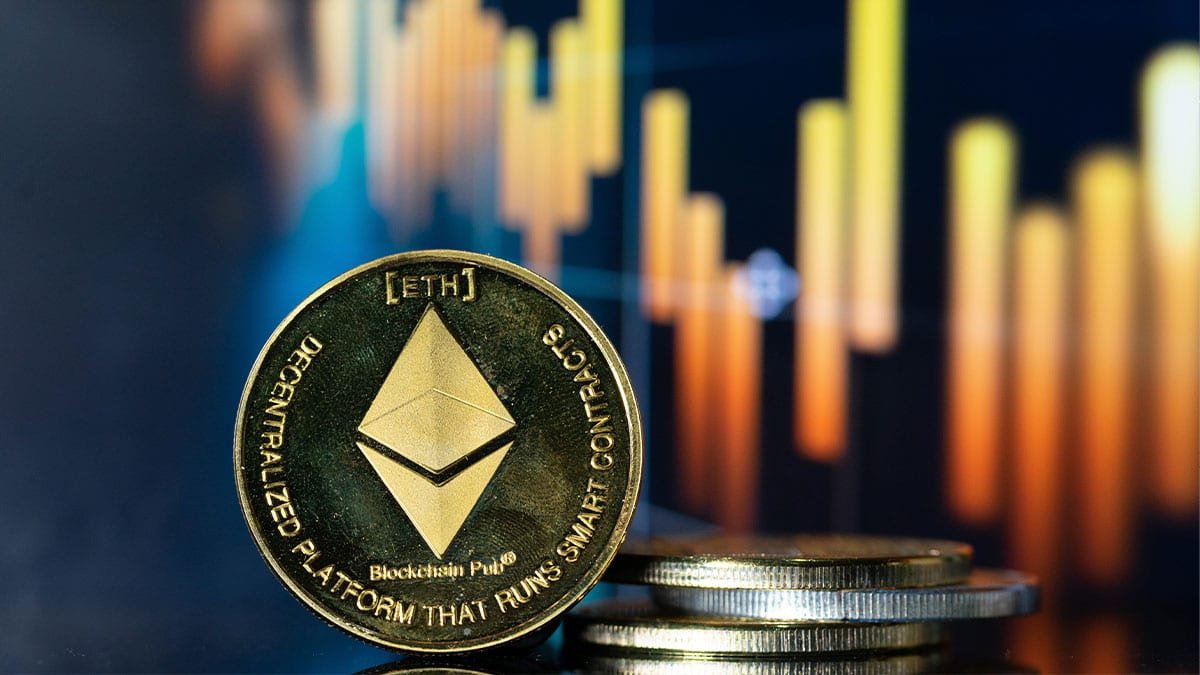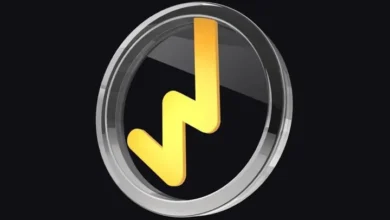Ether Price Forecast ETH Eyes $4,200 Recovery

Ethereum (ETH), the second-largest cryptocurrency by market capitalization, is once again in the spotlight as its price flirts with a critical threshold. With ETH trending toward $4,200, traders and investors are watching closely to see if this is the start of a further recovery or a dangerous turning point. In our Ether price forecast below, we’ll analyze the technical backdrop, review fundamental drivers, assess the risks, and map out plausible scenarios. Whether you’re a long-term holder, a short-term trader, or simply curious about where the trajectory might head next, this in-depth forecast aims to give you clarity in a volatile market.
In this article, you will find:
-
A technical overview of ETH’s current setup
-
Key support and resistance zones
-
Fundamental catalysts and headwinds influencing the recovery
-
Scenario-driven outlooks (bullish, base, and bearish)
-
Strategy suggestions for different types of participants
-
Conclusion and FAQs to wrap it all together
Let’s dive into what might come next for ETH’s path.
Technical Landscape: ETH Approaches $4,200
Current Price Action and Chart Structure
As ETH nears $4,200, the Ether price forecast hinges intimately on how that zone behaves. On shorter timeframes, ETH has found support in a band between $4,000 and $4,200, where prior liquidity clusters and past order flows suggest buyers may step in again.
Meanwhile, on higher timeframes, ETH is contained within a long-term symmetrical triangle pattern, one that stretches back several years and defines a tightening wedge of compression. The recent V-bottom recovery from around $3,800 has given some technical credence to a bullish breakout bias.
Momentum indicators are telling. The RSI remains near neutral-to-slightly bullish zones, indicating the bulls have not yet overextended, and the MACD is approaching a crossover in some shorter timeframes, hinting at potential upside momentum.
Thus, the chart structure suggests ETH is compressing into a decision point. A sustained move above the triangle’s upper boundary near $4,400–$4,500 could validate the next leg up, while failure below $4,200 might trigger renewed downside pressure.
Key Support and Resistance Zones
To project future ETH movement, we must clearly define where demand may survive and where supply may repel.
-
Support zones: The most critical support area is around $4,200. Below that, the $4,000 psychological level serves as a second safety net. Some analysts also reference $3,800 as a deeper fallback, especially if broader risk factors intensify.
-
Resistance zones: On the upside, the $4,400–$4,500 band is a key resistance zone. Clearing that opens pathways toward $4,800 or higher. Some aggressive models even project a break into $5,000+ territory if momentum builds.
It’s worth noting that ETH has already broken through recent resistance around $4,000, suggesting some shift toward bullish pressure. But resistance at $4,200 to $4,500 remains stiff, with many traders watching whether ETH can convincingly close above those levels.
Fundamental & Macro Drivers Behind the Recovery

While technical analysis gives a roadmap, fundamental drivers are what can propel ETH beyond key levels—or stall the trend altogether. Let’s examine those forces.
Positive Catalysts and Tailwinds
Institutional Demand & ETF Flows
One of the most talked-about drivers for ETH’s recovery is renewed institutional demand and inflows into Ethereum-linked ETFs or products. While Bitcoin typically leads in ETF-type flows, ETH’s staking features and utility bring a differentiation. If institutions view ETH as not just a speculative asset but also a yield-bearing instrument (through staking), it could tilt capital flows in its direction.
Network Activity, DeFi Growth & Upgrades
Ethereum’s strength lies in actual usage: decentralized finance (DeFi) protocols, NFTs, and smart contract activity all contribute to real demand for ETH. If network metrics like unique active addresses, gas usage, or total value locked (TVL) continue to expand, they lend credence to price appreciation.
Additionally, upcoming or recently completed upgrades or enhancements to the network—especially those improving scalability, gas efficiency, or staking reward mechanisms—can help strengthen confidence in ETH’s long-term fundamentals.
Macro Sentiment, Risk Appetite & Capital Rotation
The broader macro environment also plays a role. In a risk-on mood, capital may flow into assets like ETH. Conversely, tightening monetary policy or equity market stress may prompt risk-off flows. ETH’s recovery narrative is thus tethered to macro regimes. Also, capital rotation away from Bitcoin and into altcoins is a cyclical pattern that has historically given momentum to ETH after BTC leads.
Headwinds, Risks & Some Bearish Signals
Liquidation Risks & Order Stack Pressure
A delicate factor in the Ether price forecast is the risk of mass liquidations, especially among leveraged traders. If ETH slips below $4,200, it could trigger cascading stop orders and margin calls. Indeed, over $236 million worth of long positions have been flagged as vulnerable around $4,170–$4,200. That volatility may exaggerate downward momentum in a collapse scenario.
Regulatory & Geopolitical Uncertainty
Cryptocurrencies remain sensitive to regulatory news—especially in the U.S. and other major jurisdictions. Changes to crypto taxation, restrictions, or curbs on institutional involvement could dampen enthusiasm. Geopolitical shocks or macro downturns might also ripple into the crypto markets, disrupting even well-positioned recoveries.
Saturation of Expectations & Overbought Reversals
Markets tend to anticipate positive news. A recovery narrative often becomes baked into price ahead of actual fundamentals. If expectations outpace actual progress, the risk of a pullback increases. In other words, ETH could face a “buy the rumor, sell the fact” dynamic if momentum becomes too stretched without underlying validation.
Forecast Scenarios: Where Might ETH Go

Given the combination of technical structure and fundamentals, we can map out three plausible paths for ETH’s trajectory: Bullish, Base, and Bearish.
Bullish Scenario – Breakout and Rally
In the bullish case, ETH decisively breaks up through $4,400–$4,500, supported by strong volume and positive news flow. This could ignite a rally toward $4,800–$5,000, and possibly stretch further into $6,000+ territory if momentum sustains and network metrics follow through. Some speculative models even see a long-term target of $8,000 after breaking out of the symmetrical triangle. Institutional inflows, positive regulatory clarity, and on-chain strength would all fuel this scenario. If ETH captures the narrative of a “New Blue-chip altcoin,” a feedback loop of buying could accelerate gains.
Base Scenario – Consolidation & Gradual Climb
Perhaps the more likely scenario is a gradual recovery. ETH could oscillate between $4,200 (as support) and $4,500 (as resistance) for a few weeks, building strength and digesting gains. Over time, incremental breakthroughs might push it higher, but without the explosive momentum of a parabolic move. In this scenario, the $4,200–$4,500 range becomes a battleground where buyers and sellers jockey for dominance. This base path allows time for fundamentals—network activity, institutional flows—to catch up to the price. It’s a healthier pattern for sustained growth rather than a quick, fickle pump.
Bearish Scenario – Breakdown and Reversion
If ETH fails to hold $4,200, we risk a crisper downside slide. That breakdown could drag the price toward $4,000 (support) and possibly further down to $3,800 or even lower, depending on market stress. The cascading liquidation pressure and negative sentiment could exacerbate the fall. In this scenario, the bullish case is invalidated. A return to this lower range would suggest caution among participants that the current rally was overextended or that bullish expectations were premature.
Strategy & Guidance for Participants
For Traders (Short-term / Swing)
-
Use tight stop-losses around key levels: just beneath $4,200 for longs, or just above $4,500 for shorts.
-
Watch for volume confirmation on breakouts or breakdowns; weak volume moves are more likely to fail.
-
Scale in/out rather than go full position at once—to reduce exposure to volatility whipsaws.
-
Stay tuned to news catalysts (ETF announcements, regulatory moves, upgrade updates) as they can trigger sharp moves.
For Long-term Investors (Hodlers)
-
Treat dips below $4,200 (if they hold stable) as potential buying zones in a bullish long-term thesis.
-
Focus on network fundamentals: TVL growth, developer activity, staking metrics, usage trends.
-
Avoid overtrading. The market may stay sideways for long stretches even in a bullish regime—patient accumulation often wins.
-
Diversify: while ETH may have a strong upside, maintain other exposures to balance risk.
Risk Management & Mindset
-
Never overleverage—crypto is volatile, and surprise reversals happen.
-
Use position sizing so that a single adverse move doesn’t wipe out capital.
-
Avoid emotional decisions during fast moves; plan and stick to your strategy.
-
Maintain awareness of broader macro shifts—crypto doesn’t move in isolation from interest rates, equities, or global events.
Also Read: Ethereum Price Surge: Why $2 300 is Within Reach
Conclusion
In this Ether price forecast, ET, H approaching $4,2,00 sits at a consequential crossroads. The technical structure is tight—the price compresses within a long-term triangle, and momentum indicators are looking cautiously constructive. The fundamentals are mixed but with tailwinds: institutional flows, usage growth, and network upgrades provide upside potential, while liquidation risks, regulatory uncertainties, and the possibility of a plugged-in narrative overshoot stand as counterweights.
Realistic paths forward include a bullish breakout to $4,800–$5,000, a base case of consolidation building toward rd gradual move, or a fallback under $4,200 threatening deeper retracement. For traders and long-term investors alike, staying nimble, managing risk, and watching for confirmation rather than acting prematurely will be critical. While no forecast is guaranteed, ETH’s positioning now invites careful attention. A clear break (either way) will likely define the next dominant trend. Until then, stay alert, stay patient, and adapt as the price tells its story.
FAQs
Q: Why is the $4,200 level so important for ETH?
The $4,200 zone represents a convergence of prior liquidity, order clusters, and a pivot in sentiment. A break below it threatens to trigger stop-loss cascades, while holding it supports the bullish thesis.
Q: Can ETH realistically reach $5,000 or beyond soon?
Yes, if momentum builds and resistance zones break decisively with strong volume, ETH could move into the $4,800–$5,000 range. Some technical models even project targets toward $8,000 in stronger cycles.
Q: What are the biggest risks that could prevent ETH from recovering?
Key risks include a breakdown below support (triggering liquidations), negative regulatory developments, disappointing network metrics (stagnant usage), or macroeconomic stress spilling into crypto markets.
Q: How should a short-term trader approach this phase?
Short-term traders should use tight stops around critical levels, scale entries in, and avoid overleveraging. Watch for confirmation on breakouts and pay attention to volume and news catalysts that might tip momentum.
Q: Is it safe for long-term holders to buy ETH now?
If one’s conviction in Ethereum’s long-term fundamentals is strong, accumulating on dips (especially if ETH pulls back toward support levels) can be a valid strategy. But it’s wise to maintain risk controls and not overcommit in a volatile environment.




